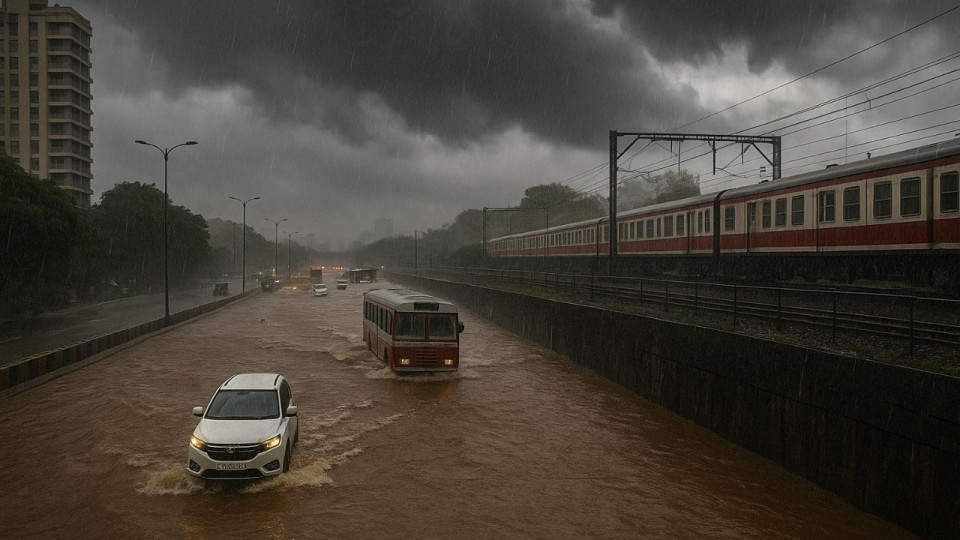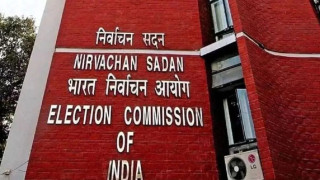
Not Just Rain, But a Deluge? Mumbai Gets Flood Alerts (Image Generated by ChatGPT)
Mumbai is facing severe flooding as heavy rains continue to lash the city. Roads are under water, subways have been submerged, and railway tracks are filled with water. The Meteorological Department has issued a warning, forecasting 300 to 350 mm of rainfall in Mumbai, Thane, Palghar, Raigad, and the Pune ghats. To put this in perspective, a cloudburst is considered to occur when more than 100 mm of rain falls in just one hour. With such heavy rain expected, authorities and residents are on high alert, wondering what the coming hours may bring.
A cloudburst occurs when 100 mm or more rainfall happens in a small area within an hour. This means sudden heavy rainfall. Mostly, this happens in hilly regions like Uttarakhand, Jammu & Kashmir, or Himachal Pradesh, because mountains push the clouds upward. As a result, they cool rapidly and water droplets fall together. This heavy rainfall causes destruction. When sudden rain occurs in such areas, water flows rapidly. On its path, it carries trees, plants, stones, and debris, forming a fast-moving current. The speed is so high that no one gets a chance to brace themselves. The rainfall here differs from Mumbai’s rainfall. The 300 to 350 mm alert in Mumbai means the total rainfall expected, not that this much rain will fall in a single spot. Therefore, the risk of a cloudburst-like event is not present, but the figure is alarming because such heavy rainfall itself brings destruction.
So far, Mumbai and surrounding areas have received between 100 and 230 mm of rainfall. After such rain, roads appear submerged in many places. In several areas, water has risen waist-high. The meteorological alert is concerning, warning of 300 to 350 mm rainfall. If 300 to 350 mm of rain occurs, its effects manifest in many ways. Rivers and streams fill quickly. The risk of roads, houses, underpasses, and metro stations flooding increases. Bridges and roads may get damaged. Power lines may collapse.
Experts say predicting a cloudburst is difficult because it occurs in very small areas and causes destructive rainfall. However, heavy or light rainfall over larger areas can be forecasted. Alerts for storms and strong winds can be issued. This is why, in rainy situations, one gets a chance to prepare based on alerts, but cloudbursts bring much more destruction.
According to the Indian Meteorological Department (IMD) data, between Monday and Tuesday morning, Santa Cruz station recorded 223 mm of rainfall in the past 24 hours, while Colaba station recorded 110 mm. However, records from BMC’s automated weather centers show that over 300 mm of rainfall occurred in several areas during this period. In the past 24 hours, Chincholi in the western suburbs recorded over 369 mm of rain, followed by Kandivali with 337 mm and Dindoshi with 305 mm. Meanwhile, Dadar received 300 mm of rain. Approaching the 300 mm mark, Chembur recorded 297 mm, Vikhroli 293 mm, and Powai 290 mm during the same period. Records show the highest rainfall was in the western suburbs, averaging 238.19 mm, followed by the eastern suburbs with 208.78 mm, and the island city division with 186.43 mm of rainfall.













Copyright © 2025 Top Indian News
